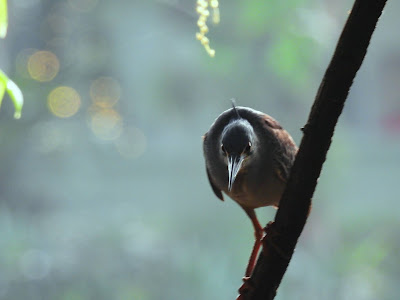Tailorbirds

Tailorbirds are small birds originally thought to be related to warblers (family Sylviidae). However recent research allies them with cisticolas. Most tailorbirds are green or grey above and white, grey or yellow below. The head may be reddish. In appearance their wings are short and rounded, the tail is also short and held upright, the bill is curved. They are birds of open scrub and parks. Tailorbirds are named from their habit of piercing a large leaf and sewing it with plant fibre and spider's web. The grass nest is then built inside that cradle. Common Tailorbird (In Malay, Perenjak Pisang) In heavy foliage this bird can jump from branch to branch- no need to open its wings. Ashy Tailorbird (In Malay, Perenjak Kelabu). Both photos below were taken at the Nature Park / Taman Alam, Kuala Selangor





